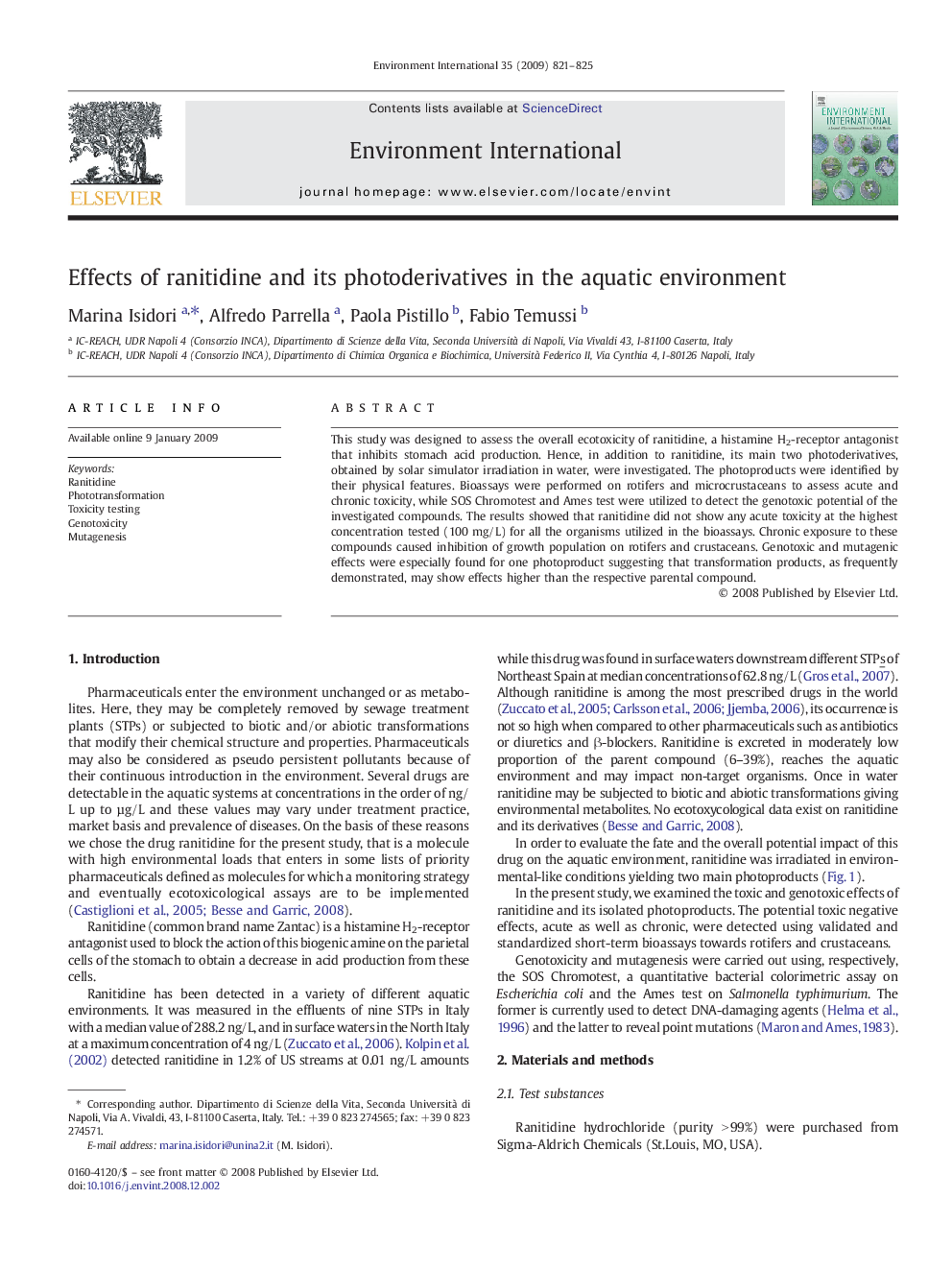| Article ID | Journal | Published Year | Pages | File Type |
|---|---|---|---|---|
| 4423433 | Environment International | 2009 | 5 Pages |
This study was designed to assess the overall ecotoxicity of ranitidine, a histamine H2-receptor antagonist that inhibits stomach acid production. Hence, in addition to ranitidine, its main two photoderivatives, obtained by solar simulator irradiation in water, were investigated. The photoproducts were identified by their physical features. Bioassays were performed on rotifers and microcrustaceans to assess acute and chronic toxicity, while SOS Chromotest and Ames test were utilized to detect the genotoxic potential of the investigated compounds. The results showed that ranitidine did not show any acute toxicity at the highest concentration tested (100 mg/L) for all the organisms utilized in the bioassays. Chronic exposure to these compounds caused inhibition of growth population on rotifers and crustaceans. Genotoxic and mutagenic effects were especially found for one photoproduct suggesting that transformation products, as frequently demonstrated, may show effects higher than the respective parental compound.
